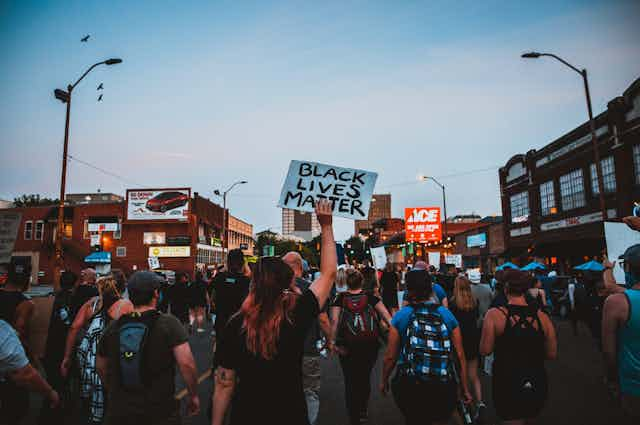It’s often said we feel a connection to those we are on the same path as or in sync with. On the other hand we may drift apart from someone or go round in circles, getting nowhere or seem to be on a different path. It’s possible though to heal these divides by moving forward, coming together or getting back on the same track.
Many metaphors for conflict and resolution seem to revolve around walking or moving together. But maybe we shouldn’t be so surprised by this – research shows that moving in time together with another person can result in positive social consequences.
One study, for example, found that people who walk in step with one another are more likely to cooperate – even if doing so comes at a financial cost to them. Studies have also shown how coordinating your movement with other people – such as tapping to the same rhythm – can lead to greater rapport and the desire to help each other. We are also more likely to conform to and obey requests when they come from someone we have coordinated with.
Given then that we are living at a time in history when many people are marching for equality and an end to discrimination and prejudice, in our latest research project we wanted to find out if walking together could be used as a tool to foster better relationships between polarised groups. And it seems it can – in more ways than you might imagine.
Walking together
We tested whether walking in synchrony with a member of a disenfranchised minority group could improve peoples attitudes towards that group. We asked native Hungarians to walk with a Roma person. Roma people are a particularly disenfranchised group in Hungary, as exemplified by a recent statement from Viktor Orban – the current Hungarian prime minister – that migrants are even worse than Roma as they come from outside Hungary.
One week before coming into the lab, we asked 70 Hungarians to fill in an attitudes assessment towards the Roma online. They were then introduced to a Roma person and spent five minutes walking laps of a large room with them. They did so either synchronously (landing their steps at the same time), or at different speeds.
The study found that following synchronous walking, people rated their Roma co-walker as more likeable, felt closer to them and had more empathy for them. They also showed increased empathy and a reduction in negative attitudes towards the Roma group as whole.
Beyond boundaries
We then wanted to see if just imagining walking in step could have the same effects – as imagining an activity has been shown to activate similar brain patterns to actually doing that activity. Imagining practising certain actions, such as throwing darts or playing a musical instrument, for example can increase performance on these tasks.
Research has also shown that imagining having a positive conversation with members of different social groups can help bring groups together akin to actual positive interactions. Previous research has also shown how imagining walking in synchrony with a group of people can increase rapport in line with actually walking together.

In a follow-up study, 60 Hungarian people came in to the lab and were asked to just imagine walking with a Roma man or woman after a video introduction. They were simply asked to imagine walking either in or out of sync with them. The study found that just imaging walking in synchrony improved intergroup relations akin to actual walking.
An online replication of this, where UK students were asked to imagine walking with Middle Eastern refugees, showed these students felt more empathy towards refugees and had more positive attitudes towards them after doing so.
Age old movement
As our research shows, moving in time together gives people a greater sense of belonging and connection to each other. These feelings, in turn, set the stage for greater cohesion between different groups.

This kind of bodily synchrony is something we, as humans, have been doing for many thousands of years. From prehistoric cave paintings of our dancing ancestors to the remains of Palaeolithic pipes people have practised moving in time with each other throughout history.
For coordination to have persisted across culture and time, it likely served some adaptive purpose in terms of evolution. Perhaps one of these purposes was to do with helping people get on the same path and move forward together. It seems then that there might just be something to the idea that we can empathise with others by walking in their shoes.

